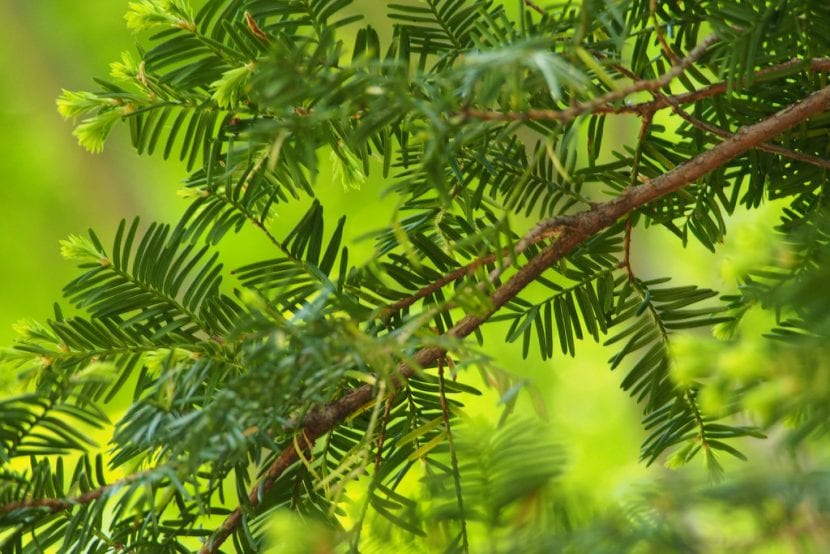
Taxus cuspidata var. cuspid // Image - Flickr / harum.koh
El yew It is a conifer that does not really grow much (not if we compare it with what others can grow), and of which there are also so many varieties and cultivars that it can even be grown in small gardens and / or in pots.
As if that were not enough, it is very resistant to cold and can live without problems in limestone soils. So if you are looking for a plant with these characteristics, below you will discover how to take care of it.
Origin and characteristics
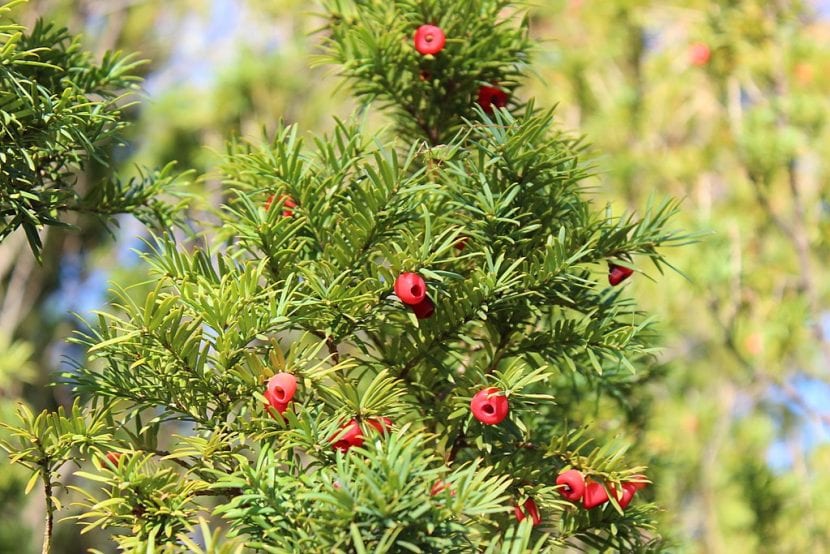
Image - Wikimedia / Philipp Guttmann
Yew is a term that refers to conifers of the botanical genus Taxus, which is composed of some 22 species classified into four groups (Baccata, Cuspidata and Sumatrana). Likewise, there are two highly cultivated hybrids as well, which are the Taxus x mean (fruit of the cross between Taxus baccata x Taxus cuspidata), and Taxus x hunnewelliana (Taxus cuspidata x Taxus canadensis). It is native to Eurasia and America.
It can reach a height of up to 20 meters, although depending on the species and the conditions where it lives, it may grow less. Its crown is normally pyramidal, with a large number of branches sprouting horizontally from the main trunk. The trunk is usually thick, up to 1,5m in diameter, with a thin brown bark.
The leaves are 10 to 30mm long, and arranged in opposite rows. Its color is dark green on the upper side and yellowish or glabrous on the underside. They are perennial, but don't be confused by the word: this means that they stay on the plant for a long time, but there comes a time when they fall off to make way for new leaves.
It is dioecious, with male and female specimens. The fruit is a berry that can be consumed, but only after the seed has been removed.
All its parts (with the exception of the fruit, as we have said) are toxic, and can cause death within a few minutes. Its life expectancy is very long, more than a thousand years. In Spain, in fact, we have in Bermiego (Asturias) a specimen called the Bermiego Yew with an estimated age of about 2.000 years, considered the oldest yew in the country and one of the oldest in Europe.
Main species
The most popular are:
Taxus baccata

Image - Wikimedia / Jerzy Opioła
It is known as the common yew or black yew, and it is a species that began its evolution during the Jurassic (more than 145 million years ago). It grows in western, central and southern Europe, and reaches a maximum height of 28 meters with a trunk diameter of up to 4m.
If all goes well, he can reach 5000 years of age.
Taxus brevifolia
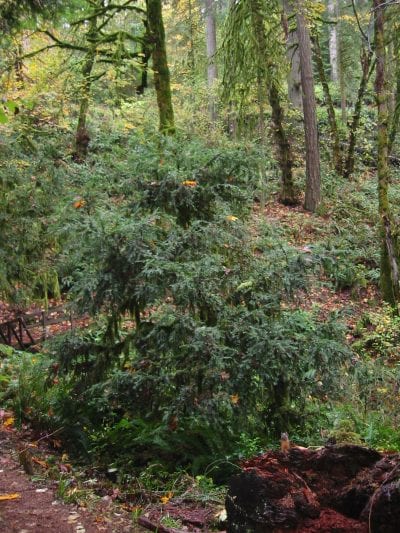
Image - Wikimedia / Walter Siegmund (talk)
It is a species native to the Pacific Northwest, in North America. It is known in English as »Pacific Yew» or Pacific yew. Reaches 10-15 meters in height with a trunk up to 50cm in diameter.
Its growth rate is very, very slow.
Taxus cuspidata
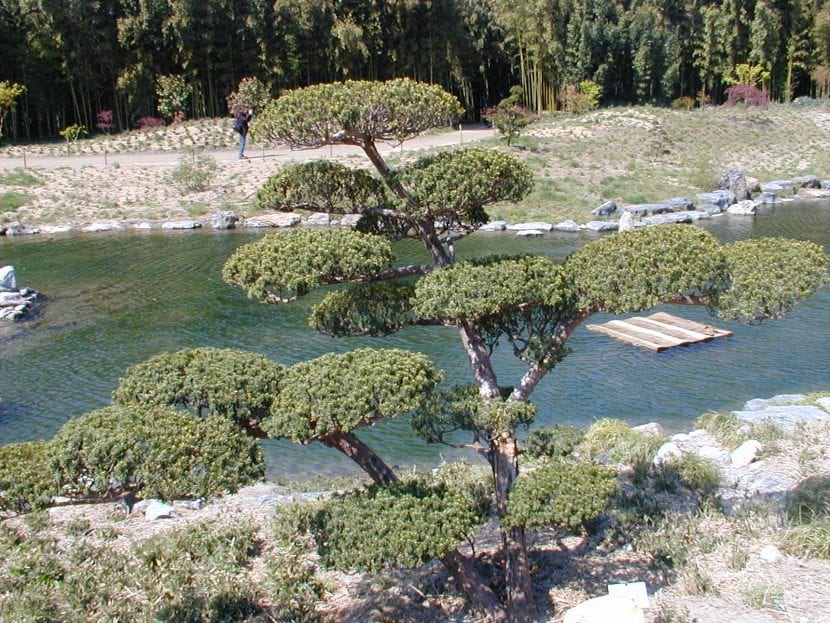
Image - Wikimedia / Norm ~ commonswiki
It is a tree native to Korea, Japan, China and Russia known as Japanese yew. Reaches a height of up to 18 meters, with a trunk diameter of up to 60cm.
Its life expectancy is about a thousand years.
What are their cares?
If you want to have a yew specimen, we recommend taking care of it as follows:
Location
It is a plant that It must be outside, in full sun or in semi-shade. For it to have a good development it is advisable to plant it in the ground, at a distance of about 5-6 meters from walls, pipes, etc. as well as other tall plants.
Earth
- Flower pot- Use substrates with a neutral or alkaline pH (pH 7). If you don't know what they are, don't worry: the universal substratum "of all life" will help you, but improves your drainage adding 30% pearlite or claystone. You can buy it here.
- Garden: grows in alkaline soils, and can be adapted to those that are slightly acidic (pH 6,5). It is important that they have good drainage so that the water does not remain stagnant for too long.
Irrigation
About 3-4 times a week in summer, and every 4-5 days the rest of the year. But beware, this is an average, not a fixed rule. For example, if it rains a lot in your area during the warmest time of the year, the frequency of watering will be much less.
Depending on the climatic conditions in your area, you will have to water more, or less.
Subscriber

Floridian Taxus // Image - Wikimedia / MPF
It's advisable pay in spring and summer with ecological fertilizers, such as guano or compost. Spread a layer about 4cm thick around the trunk, mix it with the surface of the soil, and water.
If you have it in a pot, use liquid fertilizers following the instructions specified on the package.
Pruning
It does not need it, although it can be pruned in late winter to remove dry, diseased, weak or broken branches, and also to shape it.
Multiplication
The shuffle multiplies by seeds and by cuttings. Let's see how to proceed in each case:
Seeds (in autumn / winter)
- The first thing to do is remove the fleshy wrapping and wash them with water.
- Afterwards, they are sown in a tupperware with vermiculite previously moistened with water, and this is put in the refrigerator for three months.
- Once a week, the tupperware is removed and the lid is removed to renew the air and to check the humidity of the vermiculite, which should always be moist.
- After that time, we will proceed to sow in pots with universal cultivation substrate.
So that the mushrooms do not do their thing, it is highly recommended to sprinkle copper or sulfur both in the tupperware and in the flowerpot.
Germination is slow and irregular, but if all goes well they will germinate in about 3-4 months.
Cuttings (in winter, after frost)
To multiply it by cuttings, pieces of branches of about 20-25cm in length are cut, which have some old wood at their base. Then, the base is impregnated with homemade rooting agents and they are planted in pots with volcanic sand (pomx or akadama for example), in semi-shade.
This way it will emit its own roots in a month or so.
Plagues and diseases
It is very resistant, so much so that the only pest that can cause it some damage is the cochineal, which is treated with paraffin or with anti-mealybug insecticides.
And as for diseases, fungi cause yellowing and desiccation of the leaves, but it is not serious and in fact it is not usually treated. Anyway, if you are concerned you can treat your plant with spray fungicides.
Rusticity
It resists without problems up to -18ºC.
For what do you use it?
Ornamental
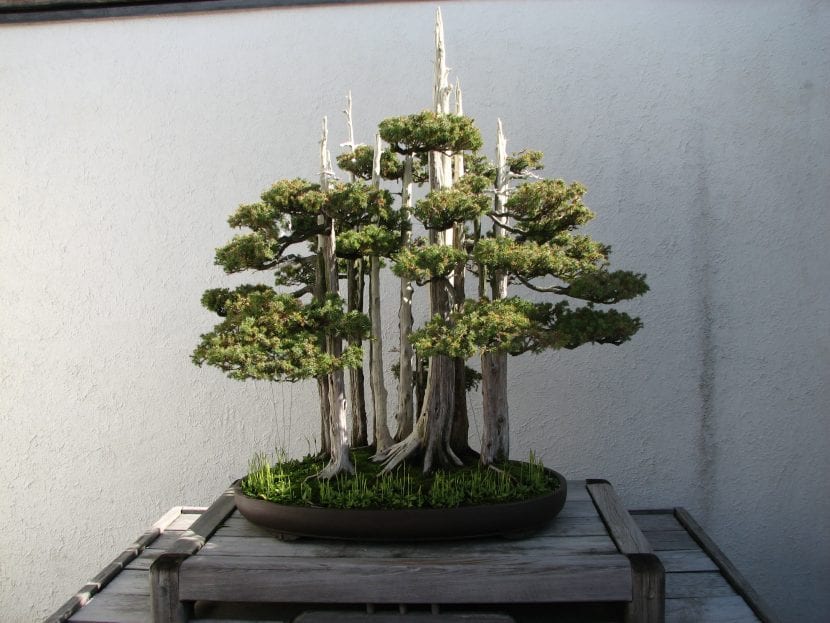
The yew is a very ornamental conifer, ideal to have as an isolated specimen, in alignments or in groups. Furthermore, it is often worked as bonsai.
Edible
The peels of the fruits can be consumed once the seed has been extracted, so they are interesting to calm the stomach a bit until it's time to eat 😉.
Wood
The wood of many species of yew has been used and used in carpentry and joinery, since it resists the conditions of the outside.
What did you think of this tree?
Very interesting explanation!
Thank you very much, Carme.
I am beginning to be interested in this long-lived tree. I will keep looking for more information. What you have provided seems very interesting. I will appreciate any other information.
Hello Jose.
We are glad that you found it interesting.
Greetings.
Is it advisable to plant yew in a garden where there are children?
Thanks greetings
Hello Eduardo.
It is true that the yew produces toxic fruits, but its growth rate is very, very slow. I don't know how old the children will be, but if they are still very young, surely by the time the tree wants to produce fruit, they will be old enough to understand that they cannot eat those fruits, no matter how appetizing they may seem.
A greeting.